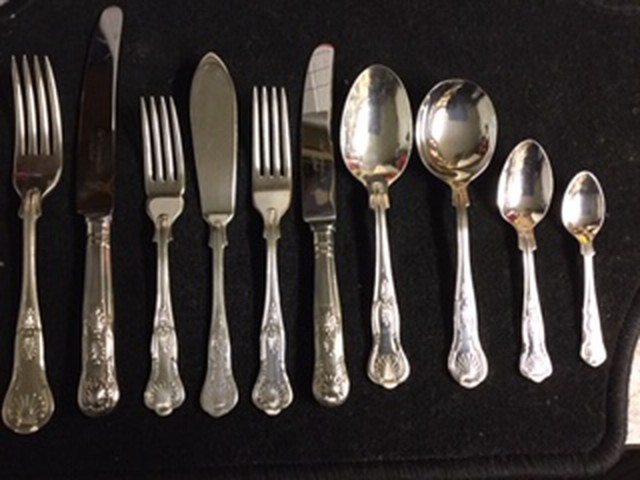Cutlery includes any hand implement used in preparing, serving, and especially eating food in Western culture. A person who makes or sells cutlery is called a cutler. The major items of cutlery in Western culture are the knife, fork and spoon. These three implements first appeared together on tables in Britain in the Georgian era.
Sterling silver is the traditional material from which good quality cutlery is made. Historically, silver had the advantage over other metals of being less chemically reactive. Chemical reactions between certain foods and the cutlery metal can lead to unpleasant tastes. Gold is even less reactive than silver, but the use of gold cutlery was confined to the exceptionally wealthy, such as the monarchs.
Steel was always used for more utilitarian knives, and pewter was used for some cheaper items, especially spoons. From the nineteenth century, electroplated nickel silver was used as a cheaper substitute for sterling silver.
Plastic cutlery is made for disposable use, and is frequently used outdoors for camping, excursions, and barbecues for instance. Plastic cutlery is also commonly used at fast-food or take-away outlets and provided with airline meals in economy class. Plastic is also used for children's cutlery. It is often thicker and more durable than disposable plastic cutlery. Wooden disposable cutlery is available as a popular biodegradable alternative. Bamboo and maple wood are a few popular choice of wood.

